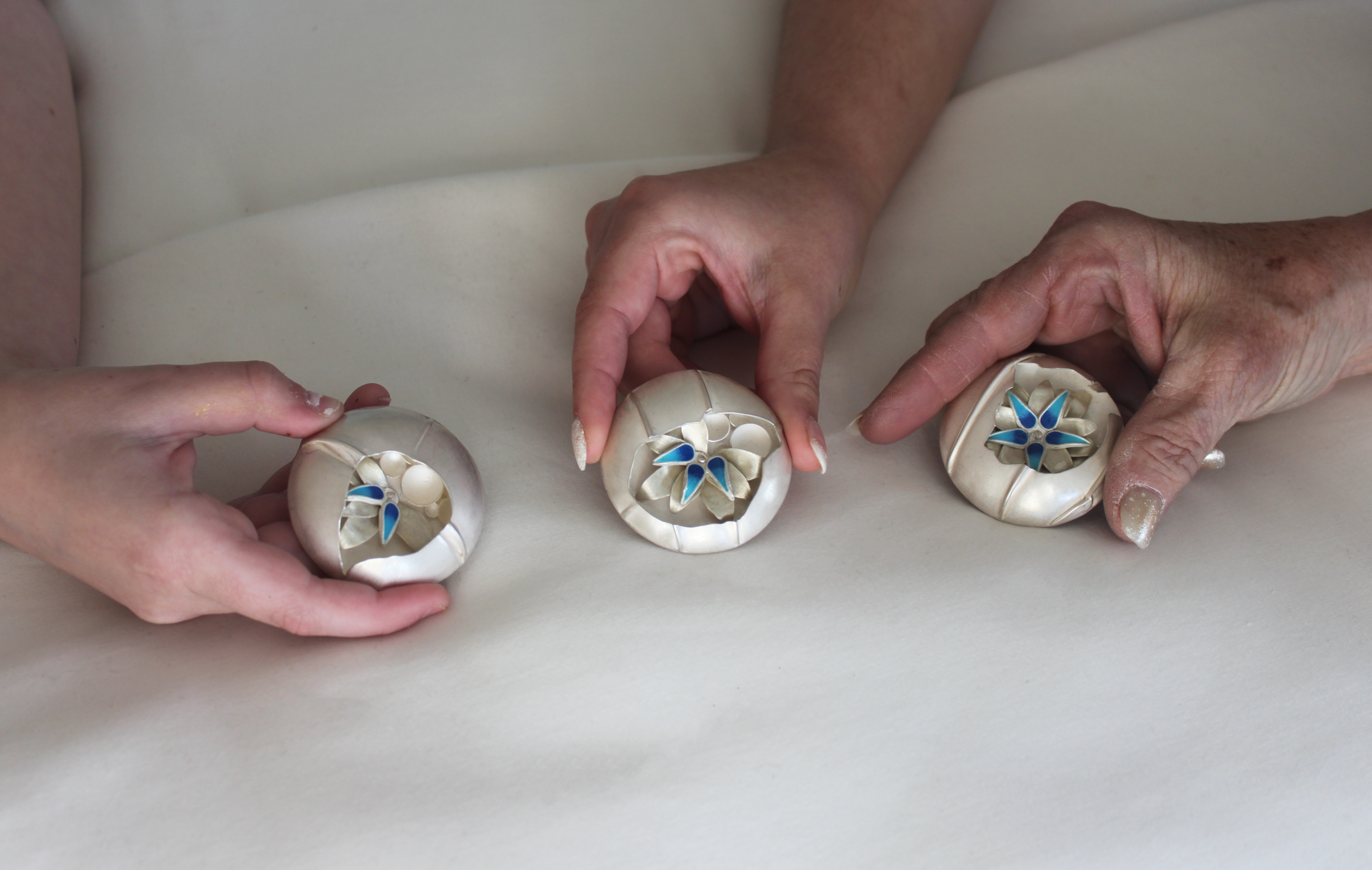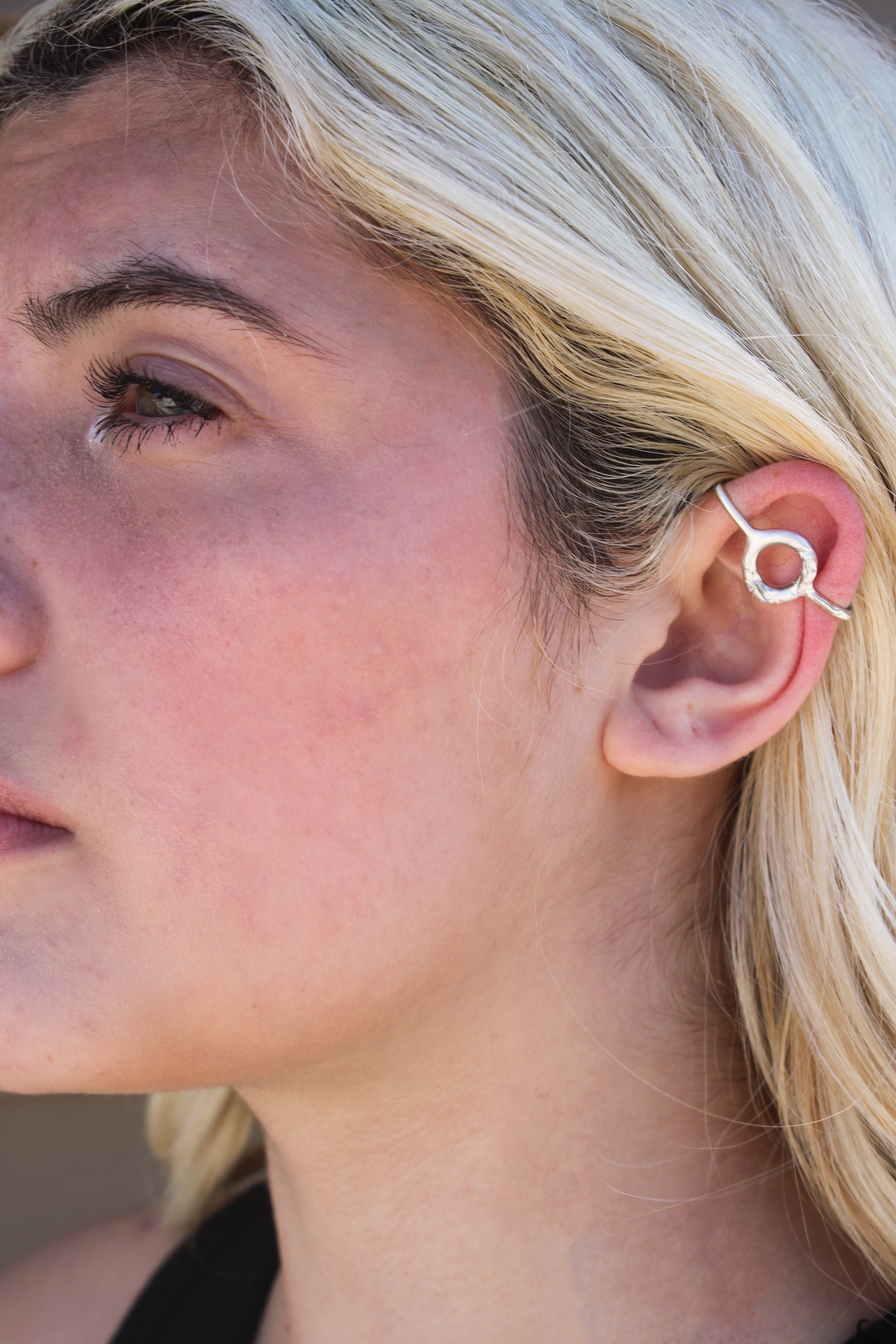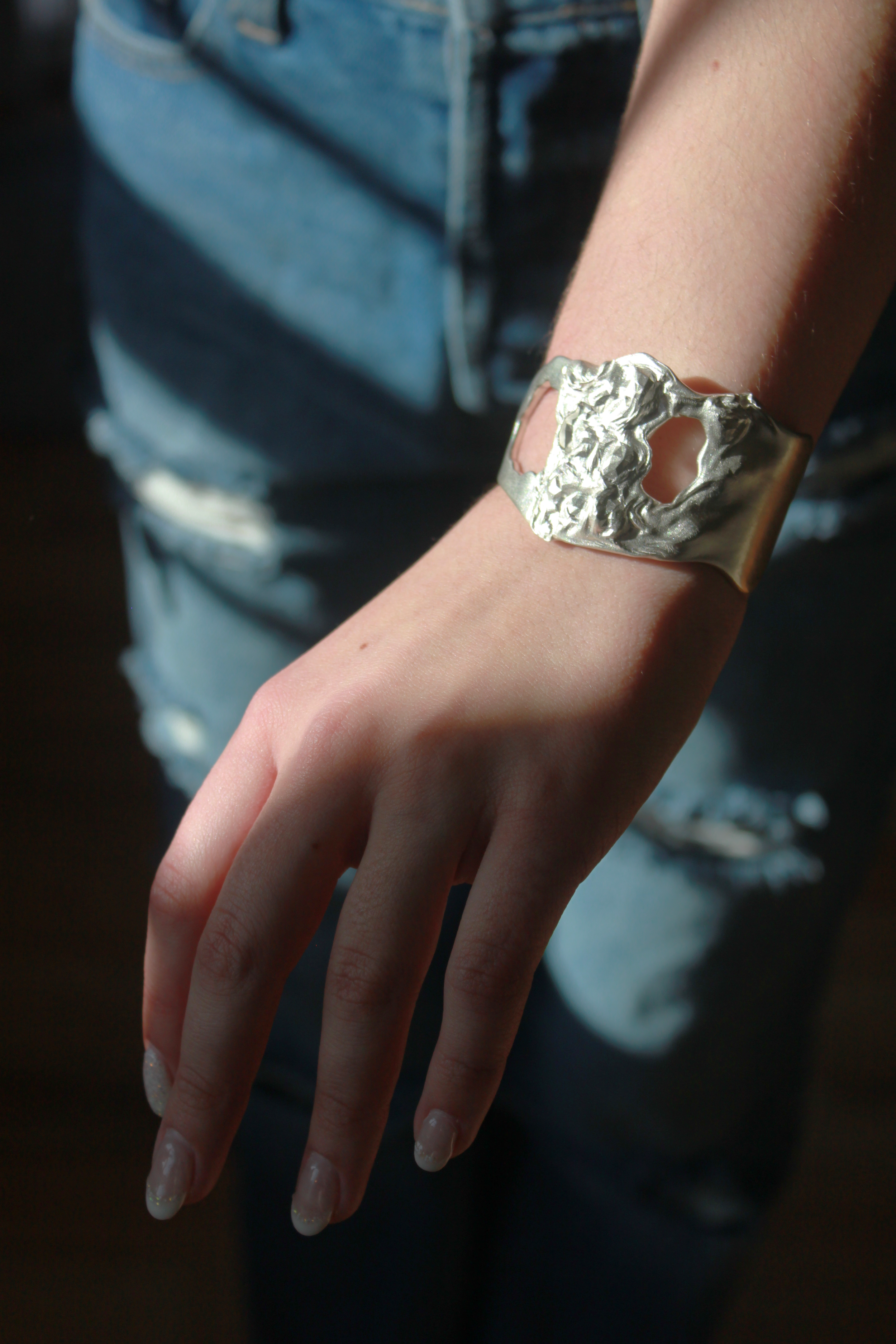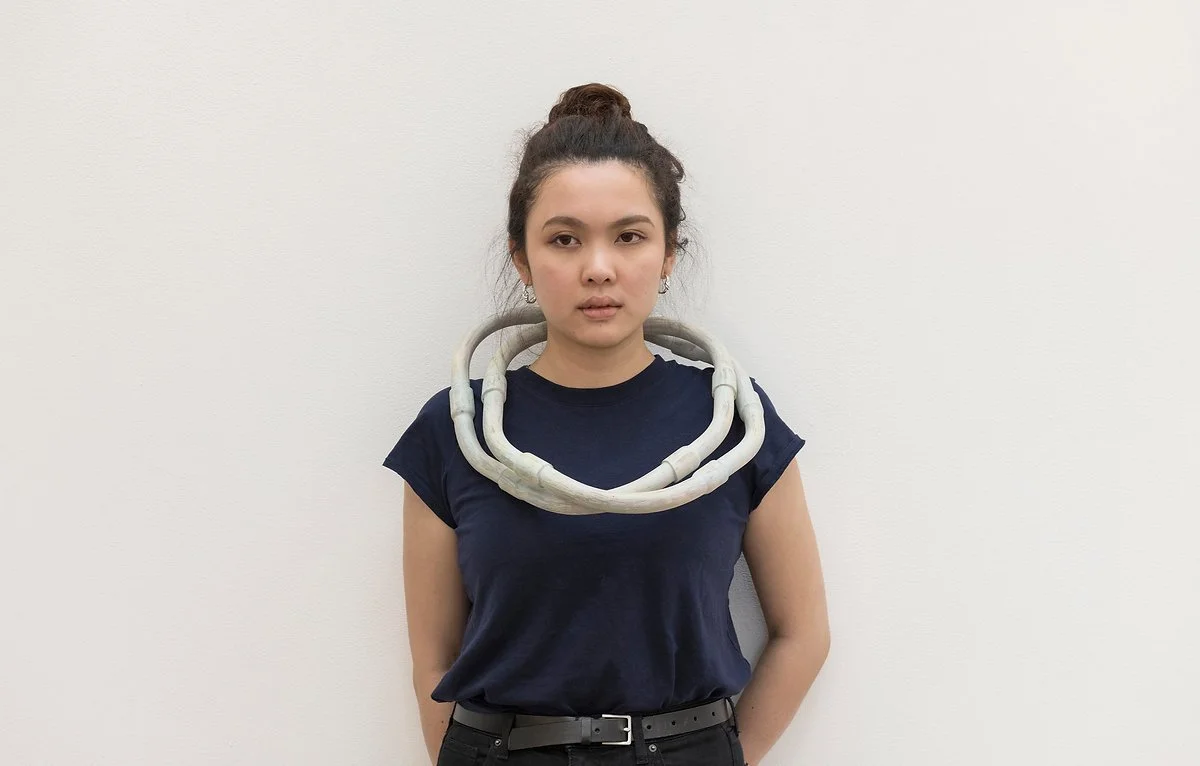10 Questions with Ruchita Newrekar
Ruchita Newrekar is a jewelry designer and contemporary jewelry artist. She is a recent MFA graduate in jewelry from Savannah College of Art and Design, USA. Born and raised in Mumbai, India, she moved to the US to embark on a journey that could blend her artistic vision with the world of jewelry. Ruchita has worked for renowned fashion labels like Tory Burch and Kate Spade New York. Her designs have earned many accolades, including honorable mentions in International Design Awards 2021 and 2022. Despite her success in the commercial realm, she remains dedicated to her artistic roots and continues to create one-of-a-kind pieces that showcase her unique artistic voice. Her personal artworks delve deeper into the exploration of connections, emotions, and the transformative power of jewelry. She uses jewelry as a platform to explore thought-provoking concepts, experiment with unconventional textures, and challenge the conventions of traditional jewelry design.
Ruchita Newrekar - Portrait
ARTIST STATEMENT
Connection is a pre-existing or spontaneously formed correlation between people, objects, or ideas. As a ubiquitous feature of human life, the effects these connections have on the entities involved are inevitable. Ruchita believes she is a transitional outcome of the results that she has experienced. By examining the emotional, physical, and symbolic impacts of these connections, she aims to create jewelry that serves as a tangible representation of their significance.
With jewelry, she expresses the undeniable existence of connections and how their effects play a significant role in making us human. When approached beyond the boundaries of the material world and adornment, one can see jewelry becoming the philosophically multi-layered masterpiece that it is. With her work, she aims to provoke thoughts, emotions, or ideas that provide an important link to what the world is to us and who we have become as people. Each piece she creates is a visual narrative, an invitation to reflect upon the interconnectedness that underlies our existence, symbolizing the intricate web of relationships that shape our lives.
10 days, sterling silver and copper, 2021 © Ruchita Newrekar
INTERVIEW
Let's talk about yourself first. Why are you an artist, and how did you become one?
I would not say that I had a passion for art from my childhood or that I was naturally gifted in this domain. In fact, I pursued my undergraduate degree in engineering. Engineering is a field that often focuses on analytical and technical problem-solving, and I was academically good at that. Despite my academic accomplishments, I always felt an underlying desire for something more. But art allowed for a different form of expression, enabling me to explore my creativity, emotions, and ideas. Art offered me a chance to engage in a different realm of thinking and allowed me to explore my passions beyond scientific constraints. I am an artist because I find a deeper sense of fulfillment by integrating creativity into my life.
After concluding my undergraduate studies, I noticed that as time went on, my passion for art only grew stronger. Owing to my undying fervor, I decided to dedicate more time and energy to my artistic pursuits. I started taking art classes and workshops, immersing myself in the techniques and theories of various art forms. The more I was involved in the world of art, the more my artistic voice began to emerge.
You work primarily with jewelry design. Why did you choose this medium specifically? And what does it represent for you?
Jewelry offers a unique opportunity to create art that can be worn and experienced on a personal level. I am drawn to the very idea of creating small, intimate pieces that become a part of someone's personal adornment. I am definitely driven by a desire to create pieces that resonate with people on an emotional level, serving as symbols of self-expression. Also, jewelry making involves intricate craftsmanship and mastery of various techniques like metalworking, stone setting, enameling, or casting. The process of creating jewelry requires precision, attention to detail, and a deep understanding of materials and their properties. As an engineer, I like the technical challenges it presents.
Jewelry has a long history of symbolism and storytelling. When incorporated with narrative elements, jewelry can tell stories, evoke emotions, and create connections between the wearer and the piece itself. I think for me, it represents personal expression, the joy of craftsmanship, and the opportunity to connect with others through wearable art.
Forming Deforming, streling silver, 2023 © Ruchita Newrekar
You have worked for premium brands, such as Tory Burch and Kate Spade New York, but you also work independently. Do you plan to launch your own brand one day?
Absolutely! Working for fashion icons like Tory Burch and Kate Spade has provided valuable experience and exposure in the jewelry industry. It helped me develop a deep understanding of consumer preferences, trends, and market demands. However, I also aspire for the freedom to express my own creative vision and establish my unique design identity. Launching my own brand would mean full creative control and exploring my personal artistic voice without feeling limited by another brand's established aesthetic or design guidelines. That is something I definitely look forward to.
Speaking of your work, what are the key concepts behind your work? And what do you think differentiates your approach from others?
I think the key concepts vary when I am working as a jewelry designer for a company versus when I am working independently as a contemporary jewelry artist. As a jewelry designer, the focal point is aesthetics. The interplay of form, color, texture, and composition to craft jewelry that is aesthetically pleasing. I also place a strong emphasis on craftsmanship and technical skill. I strive for impeccable quality in my pieces, ensuring that each piece is meticulously crafted and finished to the highest standards. Also, because commercial jewelry is meant to be worn and enjoyed on the body, I pay close attention to the ergonomics and comfort in the wearability and functionality department.
As a contemporary jewelry artist, my main focus is on infusing my artwork with my personal expression, values, and stories. I aim to create pieces that reflect my artistic vision, cultural influences, and individuality. Pieces can serve as tokens of love, milestones, cultural heritage, or expressions of identity, allowing wearers to connect with the deeper meanings behind the jewelry.
My unique design sensibility, I think, helps me stand out amongst my peers. I bring my own perspective, influences, and experiences, resulting in a distinctive style and a distinguishable design language. For example, my contemporary pieces mainly focus on narrating connections and their effects. While this may be a competently explored topic in art, it's next to impossible to find someone who conveys the concept in the same way I do.
I, sterling silver, 2x2 cm, 2021 © Ruchita Newrekar
Grandmother, Mother, and I, sterling silver and enamel, 2x2 cm each, 2021 © Ruchita Newrekar
In your statement, you mention that your work expresses "the undeniable existence of connections and how their effects play a significant role in making us human." Where do you draw your inspiration for your series?
Whether the idea appeals to one or not, I have always believed that everything is connected. Man is a social creature; wherever he goes, he makes friends. And everything he comes across, he forms a unique connection with. While this connection may not always be intentional, its establishment is inevitable. So, as long as it can rely on my curious eye and attentive mind to capture the insight, the concept doesn't even have to look for inspiration for the possibilities of continued existence. If I promise to be less self-involved and more of a conscious individual, I am guaranteed that a lifetime of discoveries lies ahead of me.
Speaking of your work, what materials do you use? What are your favorite ones to work with, and which would you like to incorporate in the future?
In the past couple of years, I have transitioned from a metalsmith to a silversmith. Sterling silver is a beautiful and versatile material that can be manipulated to create a wide range of textures, finishes, and colors. You can polish it to a high shine, oxidize it to create a dark patina or texture it to create a unique surface. I experiment with its finishes a lot until I find one that aligns with my contemporary aesthetics. Polished silver has this beautiful, lustrous appearance, while a brushed finish adds a slight roughness. If you anneal it just the right amount, you get this matte white finish. My favorite is the fine satin look that is evident in most of my pieces. Occasionally, I will use enamel and laboratory-created gemstones for a pop of color.
Not a material, really, but I am looking to incorporate 3D rendering as a full-time practice in my routine. Experimenting with metals during the initial planning stage is a very energy-intensive process that involves the waste of a lot of resources. But with 3D modeling and 3D rendering before crafting the final piece with traditional metalsmithing, there is no limit to the exploration process, no overconsumption, and there is a minimization of waste.
Smooth unsmooth, sterling silver, 2023 © Ruchita Newrekar
How has your art evolved over the years? And what inspired you to experiment?
As I have matured personally and professionally, I have undergone a process of self-reflection and introspection. With time, I have questioned my motivations, artistic goals, and the impact I want to make through my work. This self-reflection has led to a deeper understanding of my art and a shift in my creative direction. For instance, focusing more on ethical practices like metal casting 3D models with recycled metal has really widened my creative abilities. Digital techniques have offered greater design possibilities and customization options, allowing for more innovative and unique metal creations.
Developing a signature style is an important milestone for jewelry designers. It involves creating a recognizable aesthetic that sets their work apart. Wanting to establish that trademark by refining my style has been a constant source of inspiration to keep experimenting.
As an accomplished designer, what would you suggest to someone just starting? What steps or experiences do you deem essential for developing a young designer?
Like any artistic pursuit, jewelry designing requires continuous skill development. One of my main suggestions is to never stop working on craftsmanship. If your next project is more refined than the previous, even with a modicum of improvement in terms of metalsmithing, you're on the right track.
The world of jewelry design is a small one, and it's important to build connections with other designers, artists, and industry professionals. It would help you a great deal to attend trade shows, join professional organizations, and consider collaborating with other artists to expand your reach and hone your craft.
And lastly, your portfolio is your calling card as a jewelry designer, and it's essential that you have a strong body of work to showcase your skills and style. So please make sure that you take high-quality photos of your pieces, and consider creating a website or social media presence to share your work with a wider audience.
Melting away, sterling silver, 2023 © Ruchita Newrekar
Intermixture, sterling silver, 2023 © Ruchita Newrekar
What do you look forward to the most in the future? What is your biggest dream as a designer?
I am absolutely waiting to see how the entire digital showcasing and virtual try-on of NFT jewelry works out. Allowing potential customers to visualize how the jewelry would look on them would provide a more engaging and immersive shopping experience. It could mean an opportunity for individuals to own and collect designer pieces without the traditional barriers of cost, physical storage, or geographical limitations. And with fractional ownership, where multiple people can own a fraction of a high-value piece, that could make luxury jewelry even more accessible to a broader audience. The future holds exciting possibilities, and I am here for it!
My biggest dream is easily about achieving entrepreneurial success. As mentioned before, I aspire to build a successful business around my designs, establish my own brand, and create a sustainable and profitable venture. And along with it, I dream of contributing to charitable causes, supporting artisans from marginalized communities, promoting ethical practices in the industry, and advocating for sustainability. I envision using my platform to create a better world through my work.
The Good, The Bad and The Ugly, brass, 2021 © Ruchita Newrekar
And lastly, what are your plans for the rest of the year? Any new series or collaboration you want to share with our readers?
I am just beginning to work on an independent high-end jewelry project that involves Australian opals. The combination of stunning opal colors and polished white metal will most certainly make for a breathtaking duo. I am excited to design the silhouettes and see how they turn out post-execution. I am also planning to add a couple of luxury watches to this collection. Having never worked with watches before, I am a little nervous, but I am also trying to enjoy the process. There are some faint aspirations to have this collection sold in high-end boutiques or flagship stores, but it's really too soon to plan that far ahead.























